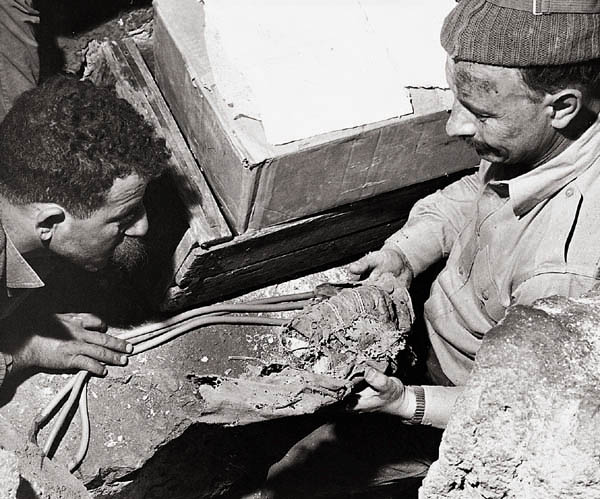Image Details

David Harris
The late Yigael Yadin (at right), Israel’s most celebrated archaeologist, gingerly displays a bundle of ancient papyri found in the Cave of Letters, in the Judean Desert. During the Bar-Kokhba War (132–135 A.D.), Jews fleeing from the invading Romans took shelter in the cave. One of them was a prosperous widow named Babatha, to whom the papyri belonged. In addition to receipts and property leases, Babatha left behind a marriage-contract for her stepdaughter Shemalzion. The back of the contract bears the signatures of seven witnesses, in three different languages: Aramaic (the first four), Greek (the fifth) and Nabatean (the sixth and seventh). Clearly, second-century A.D. Israel was a multi-ethnic area, in which several languages were written and recognized.
